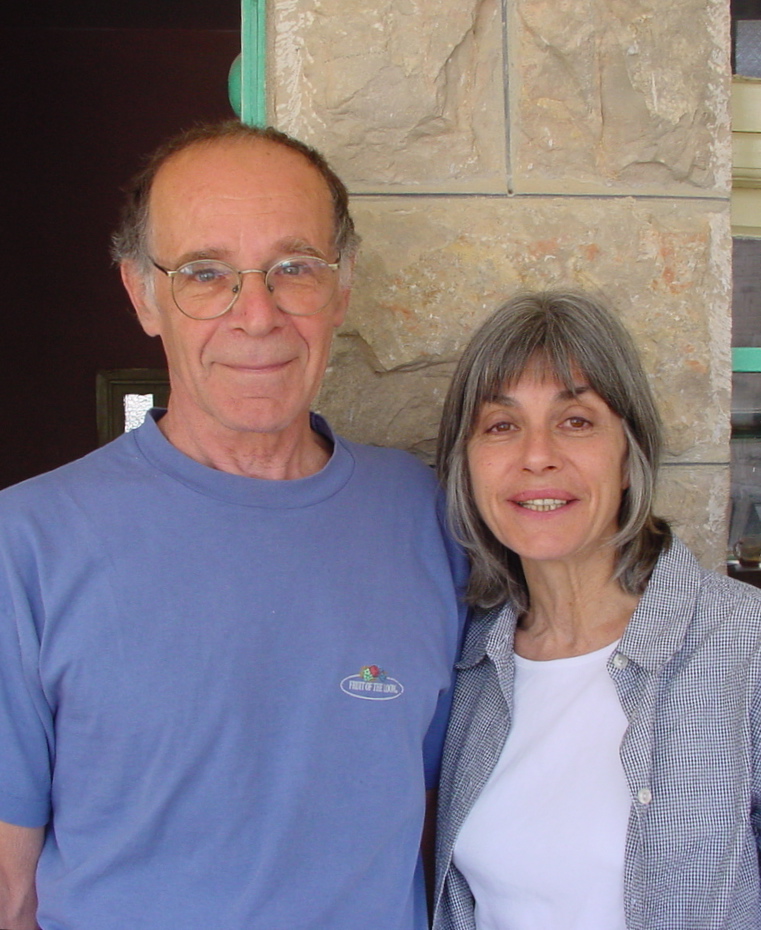In 2001 Tom Kay closed his practice in London and, with his wife Adah Kay, a social policy analyst, decided to go and work in Palestine.
From 2000, when the Second Intifada broke out, they had been involved in pro-Palestinian politics in London. They then began to think about whether they could live there and support the Palestinians, using their life and work experience. Adah explains it like this: ‘For both of us such a commitment melded personal and political. For Tom, I think in a way, which had never hit him before.’
Tom went on ahead in late 2001 to study Arabic, with the intention of later teaching architecture at Bir Zeit University. But as it turned out, the Israelis intensified military repression, and he spent most of his time monitoring and recording what was happening. On checkpoint watch he got ill with pneumonia. He describes his ‘why’ in an email to his son, Finn, of February 2002:
‘Day by day what I feel changes and so perhaps do the reasons. Over the last 2 years and until I arrived, I might well have said ‘I think I have found something which begins to replace my obsession with architecture’. Something I want to do, exactly what and how I do not know, except that it would involve me directly as a person rather than a political being (which I have never really been. i.e. I might have had commitment but no staying power.)
The other question is why now? 45 years ago I thought making a Jewish state was a bad mistake. I was not completely aware of the terrible injustice and consequences. Forty years ago working in Israel, I could see the negative effects of yet another Nationalism and I could also see the second rate citizenship of the Palestinians inside Israel. I was still only just aware of the incredible harm being done to a whole people outside the then borders.
In 1967 the Israelis felt themselves under siege and in the Six Day War, showed themselves to be a well-organised military state, unlike the surrounding Arab countries. They captured most of the land at that time containing the refugee camps of the Palestinians. The Palestinians therefore swapped one master for another and still had nothing… and for the last 35 years their plight has continually worsened to the point that many young Palestinians see absolutely nothing for them here and no way out…
The answer to why now… lies with me being 66 years old and maybe just capable and healthy enough to make a contribution.
Now that I am here it is clear that it is not the ‘contribution’ which is important. It is the fact that I am here which gives people I meet a degree of support in what looks to them like total isolation. The world does not seem to care. Virtually every contact I make whether in the street or anywhere else makes it super clear that my presence here is valued no matter what I can or cannot do. Just the fact that I am here. I am continually moved by it. I cannot get used to it.’
Professionally, he had returned to Palestine to teach; he was visiting professor at Birzeit University, near Ramallah, from 2002 till 2005, when he reached the official retirement age of 70. He then concentrated on work with RIWAQ, the Palestinian Centre for Architectural Conservation. He returned to London in the late summer of 2006, where his lung cancer was diagnosed.
While in Ramallah, Tom documented, in writing, photographs and sketches, what he witnessed. As Israeli repression increased in 2002, he began to send regular emails to family and friends, describing what it was like living under occupation. Their flat had a direct view of the Palestinian Authority’s headquarters, so photographs of it’s destruction were sent in real time. As more friends heard of these emails, their circulation grew. He called them the PAL notes. sometimes they came daily, sometimes weekly but, in the end, they formed a story of five years of endurance and friendship.
His reports to the western media were some of the first to show the full extent of Israel’s wanton destructiveness; its systematic use of planning, settlement building and demolition to control the Palestinians. His article in the Architectural Review in May 2002 showed the devastation wrought by the Israeli army to civilian infrastructure. Its publication resulted in a wave of abusive threats to the magazine from Zionists all over the world. The fury of this response to the public disclosure of Israeli behaviour shocked those who were unfamiliar with such knee-jerk denial, especially as they knew that Tom’s reporting was honest.

See Pal Notes
